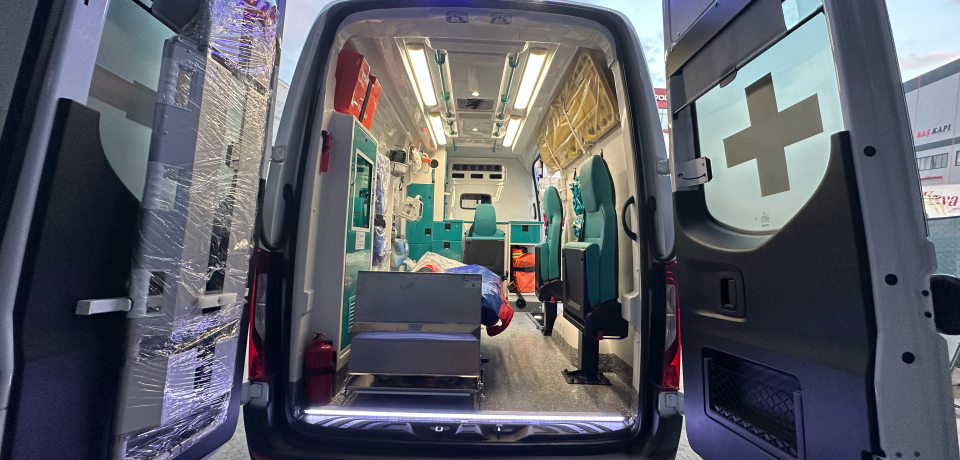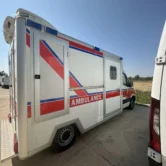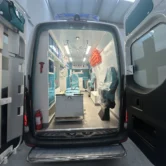
Mercedes-Benz Sprinter 316 CDI Patient Transport Ambulance | Technical Overview & Features
Introduction: The Pinnacle of Reliability in Medical Transport
In the critical world of medical logistics, the vehicle is not merely a mode of transport; it is a mobile extension of clinical care. For non-emergency medical transport (NEMT), where comfort, reliability, and safety are paramount, the Mercedes-Benz Sprinter 316 CDI Patient Transport Ambulance stands as the undisputed industry benchmark. Engineered with German precision and designed for unwavering duty cycles, this vehicle transforms from a robust commercial platform into a sanctuary of care on wheels. This technical deep dive explores the specifications, features, and engineering philosophy that make the Sprinter 316 CDI the preferred choice for healthcare providers worldwide.
Chapter 1: Powertrain and Performance – The Heart of Dependability
At the core of every reliable ambulance is a powertrain built for purpose. The Sprinter 316 CDI is equipped with a proven and efficient engine designed to perform under pressure.
- Engine: The model typically features a 2.1-liter inline-4 turbocharged diesel engine (OM651 engine series). This powerplant is renowned for its exceptional torque delivery, fuel efficiency, and legendary longevity.
- Horsepower & Torque: Outputs often range around 136 horsepower and a compelling 330 Nm (approx. 243 lb-ft) of torque. This high torque output, available at low RPMs, is crucial for an ambulance. It ensures confident acceleration even when the vehicle is fully loaded with medical equipment, multiple personnel, and a patient, making merging into traffic and navigating urban environments effortless.
- Transmission: Commonly paired with a smooth-shifting 7G-TRONIC PLUS 7-speed automatic transmission, the powertrain ensures seamless gear changes. This reduces driver fatigue on long shifts and provides a exceptionally smooth ride for the patient, minimizing jolts and vibrations.
- Fuel Economy: Despite its size and capability, the diesel engine offers impressive fuel economy for its class, significantly reducing the total cost of ownership for fleets that cover vast distances.
- Drivetrain: Available in both Rear-Wheel Drive (RWD) and optional 4×4 configurations, the Sprinter provides flexibility for operations in diverse climates and terrains, ensuring access and reliability year-round.
Chapter 2: Chassis, Dimensions, and Handling – A Stable Foundation
The Sprinter’s chassis is the blank canvas upon which the ambulance box is built, and its design is critical for safety and handling.
- Platform: Built on a high-strength steel chassis with a high payload capacity, it readily accommodates the substantial weight of the conversion, including a modular body, stretcher, oxygen tanks, and medical cabinets without compromising performance.
- Dimensions: The long-wheelbase (LWB) and super-long-wheelbase (SLWB) variants are typically chosen for ambulance conversions. These offer ample interior space for patient care while maintaining manageable external dimensions for urban maneuverability.
- Example Interior Dimensions (LWB): Approximately 4.5+ meters (14.7+ ft) of load length, providing a spacious and functional medical compartment.
- Suspension & Handling: The Sprinter features an independent front suspension and a robust rear axle, often with adaptive damping, to provide a car-like driving experience. The optional AGILITY CONTROL suspension adjusts to the load and road conditions, actively enhancing comfort and stability—a critical feature for patient comfort. Precise power steering and a tight turning circle make it surprisingly agile in city traffic.
Chapter 3: Safety Systems – Protecting All On Board
Mercedes-Benz’s commitment to safety is deeply embedded in the Sprinter’s DNA, offering a comprehensive suite of active and passive safety systems.
- Active Safety: The Adaptive ESP® (Electronic Stability Program) is the cornerstone of its active safety, incorporating functions like Load Adaptive Control, Brake Assist (BAS), and Anti-Lock Braking (ABS). Optional advanced systems such as:
- Crosswind Assist helps compensate for strong side winds.
- Attention Assist detects drowsy driving patterns.
- Active Brake Assist can help prevent collisions.
- Passive Safety: The body structure features a rigid safety passenger cell with reinforced side walls and front and rear deformation zones. It is equipped with a comprehensive airbag system (driver and front passenger), and three-point seatbelts for all occupants.
- Lighting & Visibility: High-performance LED headlights and taillights ensure exceptional visibility and ensure the vehicle is seen by others. Additional integrated emergency lighting (e.g., LED beacons, scene lights) is seamlessly incorporated into the ambulance conversion.
Chapter 4: The Medical Interior – A Mobile Clinic
The conversion from a van to a patient transport ambulance is where functionality meets compassion.
- Layout: The interior is meticulously designed for workflow efficiency. A typical layout includes a central locking stretcher system, a primary attendant seat, and well-organized cabinets.
- Medical Equipment: The vehicle is pre-equipped with essential medical provisions:
- Electrical System: A dual-battery system with an inverter provides reliable 12V and 230V power for medical devices (e.g., ventilators, monitors, suction units) without draining the vehicle’s starter battery.
- Oxygen System: Integrated oxygen cylinder racks with a minimum of two outlets for respiratory support.
- Suction Unit: A fixed or portable aspirator for airway management.
- Medical Storage: Locking, shock-absorbent cabinets and drawers for secure storage of medications, IV supplies, and trauma kits.
- Communication: A dedicated intercom system allows clear communication between the driver and the medical attendant in the rear.
- Patient Comfort: The environment is designed to reduce anxiety. Features include sound-dampening insulation, climate control with separate rear A/C and heating, adjustable interior lighting, and large windows to prevent claustrophobia.
Chapter 5: Customization and Operational Efficiency
No two medical services are identical. The Sprinter 316 CDI platform is celebrated for its high degree of customization.
- Conversion Options: Reputable converters offer a wide range of options, from basic transport modules to advanced units with specific configurations for bariatric patients, infectious disease control, or mental health transport.
- Telematics & Connectivity: Integration of fleet management software (like Mercedes PRO Connect) is seamless. This allows operators to monitor vehicle health, location, fuel consumption, and driver behavior, optimizing fleet maintenance and response logistics.
Conclusion: The Uncompromising Choice for Patient Transport
The Mercedes-Benz Sprinter 316 CDI Patient Transport Ambulance is more than just a vehicle; it is a strategic asset for any medical transport operation. It successfully merges the rugged reliability and advanced safety technology of a world-class commercial van with the specialized, life-sustaining environment of a mobile medical unit. Its efficient powertrain lowers operational costs, its robust chassis ensures durability, and its customizable interior empowers medical professionals to deliver the highest standard of care en route.
For fleet managers, it represents a low-risk, high-return investment renowned for its resale value and low total cost of ownership. For medical attendants, it provides a safe, efficient, and ergonomic workspace. And most importantly, for the patient, it offers a smooth, secure, and comfortable journey during a vulnerable time. It is this holistic excellence that cements the Mercedes-Benz Sprinter 316 CDI’s status as the definitive vehicle in its class.
Keywords: Mercedes Sprinter 316 CDI Ambulance, Patient Transport Ambulance, Non-Emergency Medical Transport, NEMT Vehicle, Mercedes Ambulance Specifications, Diesel Ambulance for Sale, Mobile Medical Unit, Sprinter Ambulance Interior, Medical Van Conversion, Type B Ambulance, Fleet Ambulance, Mercedes OM651 Engine, 7G-TRONIC Automatic Ambulance, Patient Comfort Transport, Ambulance Safety Features, Dual Battery System Ambulance, Oxygen Unit Ambulance, Custom Ambulance Builder.







